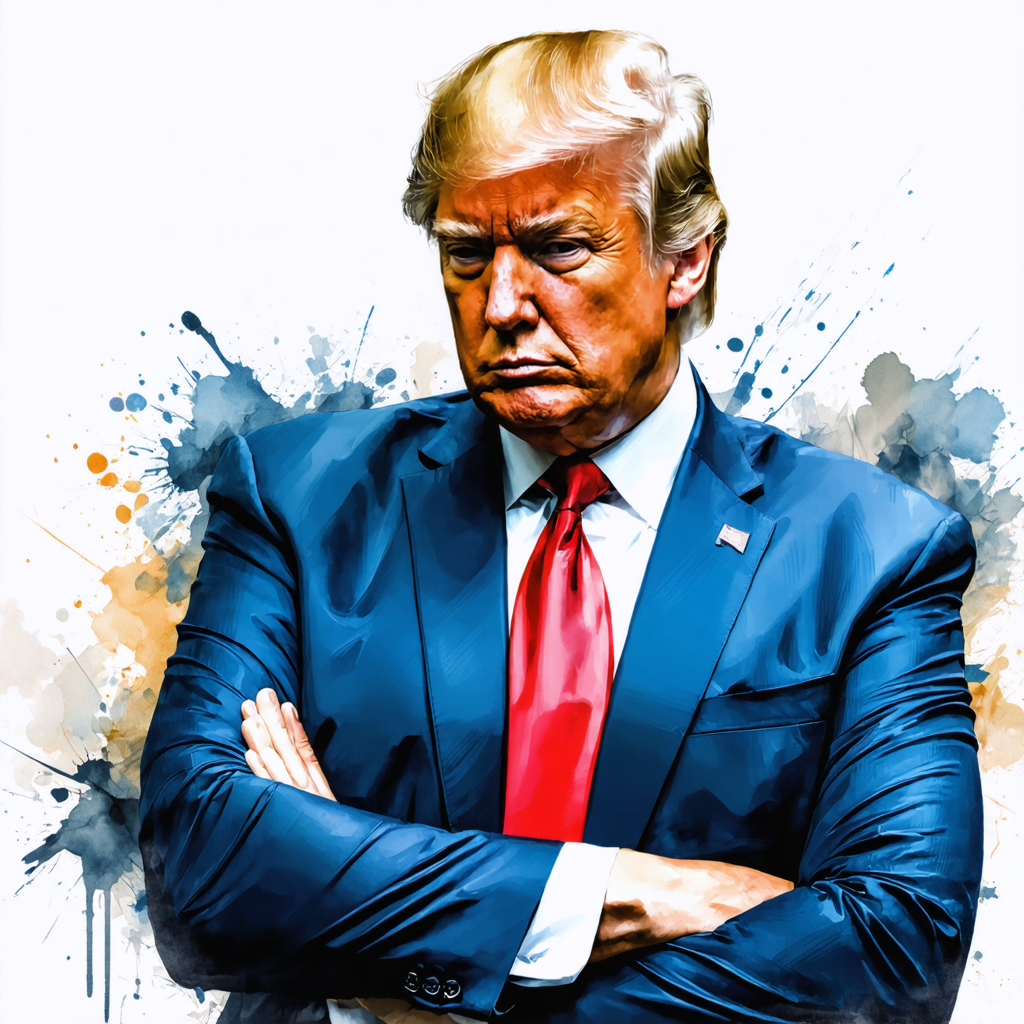By J. Philippe Blankert, 20 February 2025
Economic Perspective
Donald Trump’s presidency saw a continuation of economic growth until the COVID-19 pandemic struck in 2020. His administration implemented sweeping tax cuts, aggressive trade policies, deregulation, and unprecedented stimulus during the pandemic. Below is an analysis of these major economic facets and their outcomes:
GDP Growth and Tax Cuts
Real GDP grew at an average annual rate of about 2.3% under Trump (Investopedia), similar to the growth rate in the late Obama years. While this was a solid expansion, it was not historically exceptional; for instance, growth in the late 1990s under Clinton averaged ~4% (Investopedia).
Trump’s signature economic policy, the Tax Cuts and Jobs Act (2017), slashed the corporate tax rate from 35% to 21% and reduced individual taxes. This provided a short-term economic boost, with corporate profits and stock markets surging in 2018. However, analyses predicted only a small long-term impact on GDP (Brookings). The tax cuts significantly increased federal deficits; without offsetting budget reductions, they were projected to add $1–2 trillion to the national debt over a decade (Brookings). Despite Trump’s prediction of 3-6% GDP growth, actual pre-pandemic growth remained around 2-3% (The Democratic Strategist).
Trade Wars and Tariffs
Breaking from predecessors’ free-trade policies, Trump launched trade wars, most notably with China. In 2018, he imposed tariffs on steel, aluminum, and a wide range of Chinese goods, citing unfair trade practices. China retaliated with tariffs on U.S. exports. As a result, U.S. farmers and manufacturers suffered losses, and consumers faced higher prices (Investopedia). By 2019, manufacturing activity slowed, and business investment weakened due to trade uncertainty (Reuters).
Trump renegotiated NAFTA, replacing it with the United States-Mexico-Canada Agreement (USMCA), which updated trade rules on digital commerce and auto content but made only modest changes to the broader North American trade framework (Council on Foreign Relations). While Trump argued that his hardline trade tactics protected American industries, studies indicated that the tariff war slightly dampened both U.S. and global GDP growth (Investopedia).
Deregulation
Trump’s administration pursued aggressive deregulation across sectors, claiming to remove seven to eight regulations for every new significant regulation by 2019 (Trump White House Archives). Over 100+ environmental regulations were weakened or reversed, including lowering auto emission standards and expanding oil drilling (McGlinchey). Businesses welcomed the rollbacks, and investment in the oil and gas industry surged, making the U.S. the world’s top energy producer. However, critics warned of long-term environmental and financial risks, with several deregulation policies facing legal challenges.
Employment and Wages
Before 2020, the U.S. job market was robust. Unemployment fell from 4.7% in January 2017 to 3.5% by late 2019, marking a 50-year low (Reuters). Employers added 6.5 million jobs between 2017 and 2019, continuing the labor market expansion that began in 2010. Wage growth increased modestly as labor markets tightened. Despite record-low unemployment rates for African Americans and Hispanics, economists noted that this trend largely extended the ongoing recovery rather than marking a significant acceleration due to Trump’s policies.
COVID-19 Pandemic and Stimulus
The economic landscape collapsed in 2020 with the onset of the COVID-19 pandemic. In the second quarter of 2020, GDP contracted at an annualized rate of ~32%, marking the worst downturn since 1946 (Investopedia). Unemployment spiked to 14.7% in April 2020 as lockdowns took effect. The Trump administration’s response included unprecedented fiscal stimulus, including the $2.2 trillion CARES Act with direct cash payments, expanded unemployment benefits, and business relief programs (Investopedia).
By late 2020, a partial recovery occurred, with half the lost jobs regained and GDP growth resuming. However, Trump left office amid a fragile economy, with unemployment at 6.3% (Jan 2021) and some sectors still struggling. The massive stimulus contributed to a record budget deficit exceeding $3 trillion in FY2020 (Investopedia). Many of Trump’s policies, including tax cuts and tariffs, remained in place and continued to shape the post-2020 economy, particularly through their effects on debt and supply chains.
Summary of Trump’s Economic Impact
Trump’s pre-pandemic economy was characterized by low unemployment and high stock market returns, extending the economic expansion he inherited. Between 2017 and 2019, GDP growth averaged 2.5-2.7%, aligning with late-2010s trends (The Democratic Strategist). Although this fell short of his 4%+ growth projections, the economy maintained solid momentum until COVID-19 hit. His policies—tax cuts, protectionism, and deregulation—had mixed long-term impacts, fueling larger deficits, trade barriers, and market shifts that continued influencing the economy even after his presidency.
War and Peace Perspective
Military Spending and Foreign Relations
Trump increased defense spending significantly, allocating $740 billion in 2020 to modernize the military (Department of Defense). However, he also pursued non-traditional foreign policies, pulling U.S. troops from Syria while escalating tensions with Iran. His stance on NATO funding led to tensions with European allies, arguing that they should contribute more to defense budgets (BBC).
Diplomatic Achievements and Challenges
Trump engaged in direct diplomacy with North Korea, leading to unprecedented summits with Kim Jong-un, though no concrete denuclearization agreements resulted (CNN). Relations with China worsened due to trade disputes and COVID-19 blame, straining economic ties (The Guardian).
Ethical Perspective
Scandals and Impeachment
Trump faced two impeachments, the first related to alleged pressure on Ukraine’s president (New York Times), and the second following the Capitol riot on January 6, 2021 (Washington Post). Ethics concerns surrounded his business dealings and tax records, with critics citing potential conflicts of interest (Forbes).
Legacy and Public Perception
Trump’s presidency remains divisive, praised for economic growth and deregulation but criticized for handling the pandemic and undermining democratic institutions (Pew Research). His policies and approach reshaped U.S. politics, influencing future leadership and governance debates.

